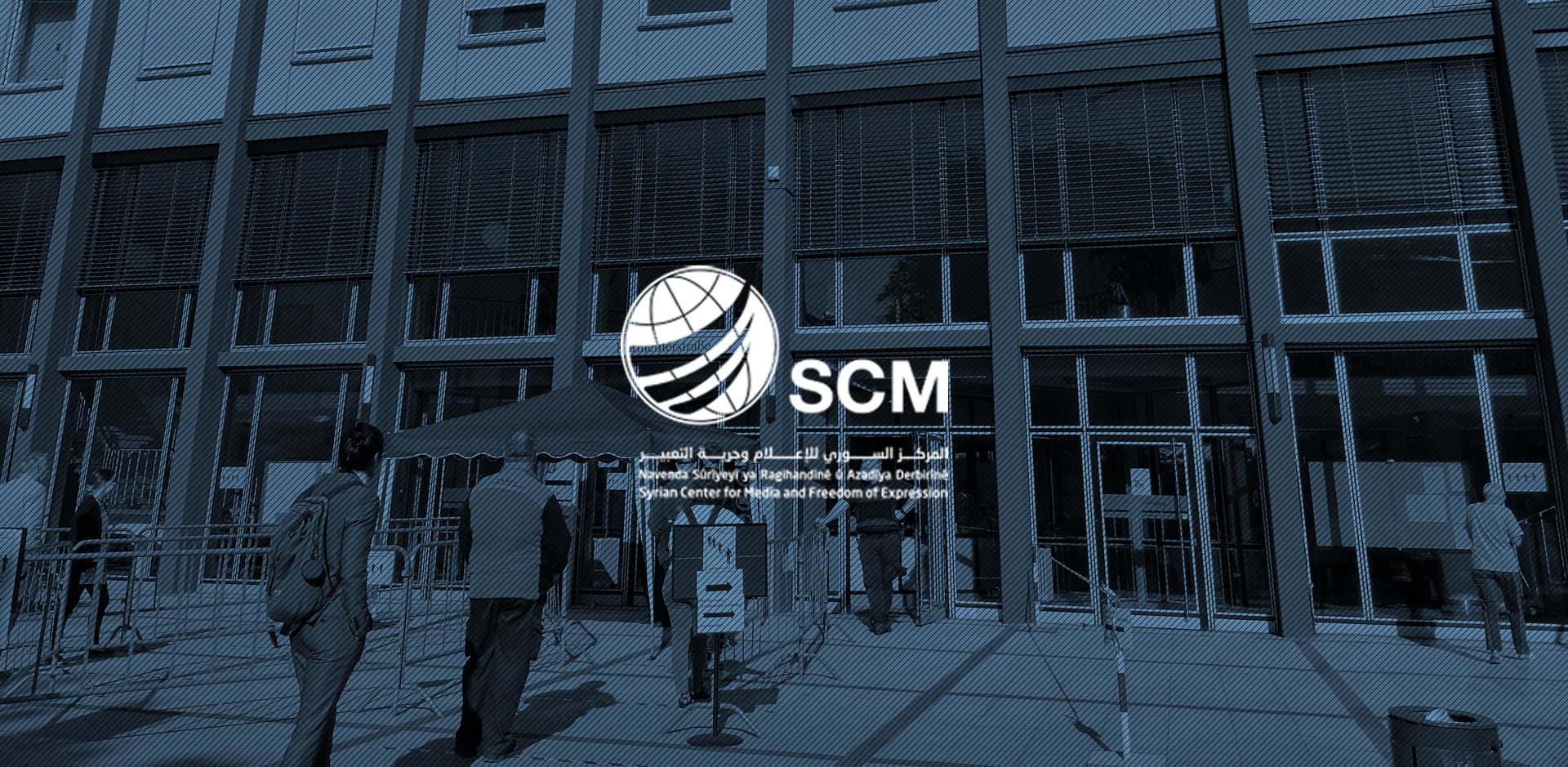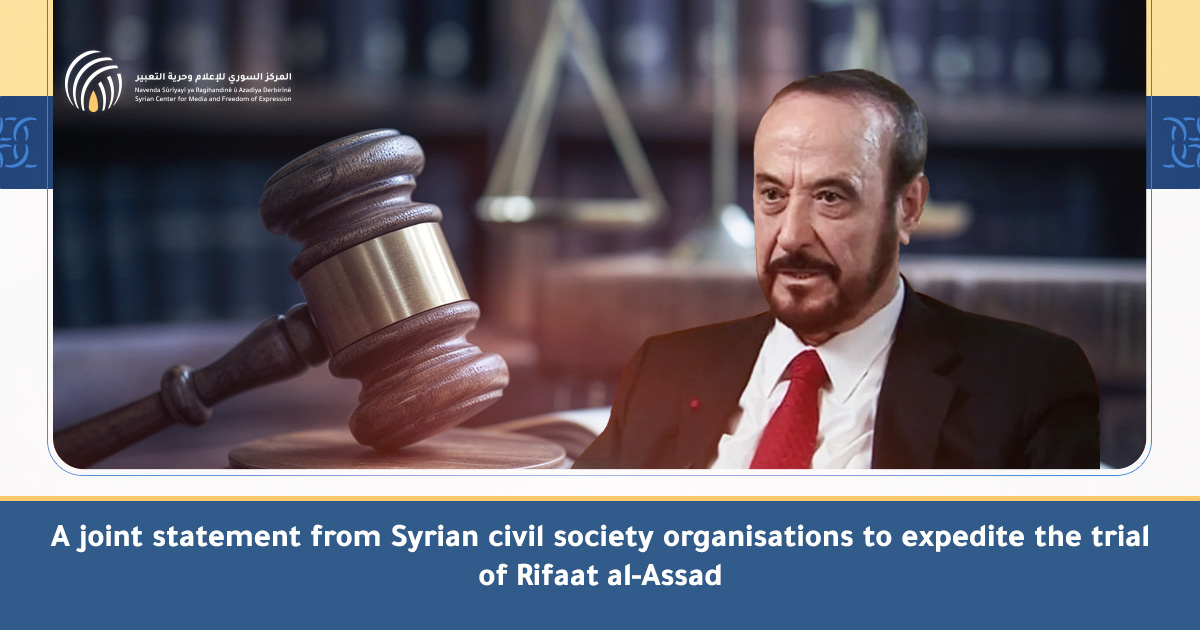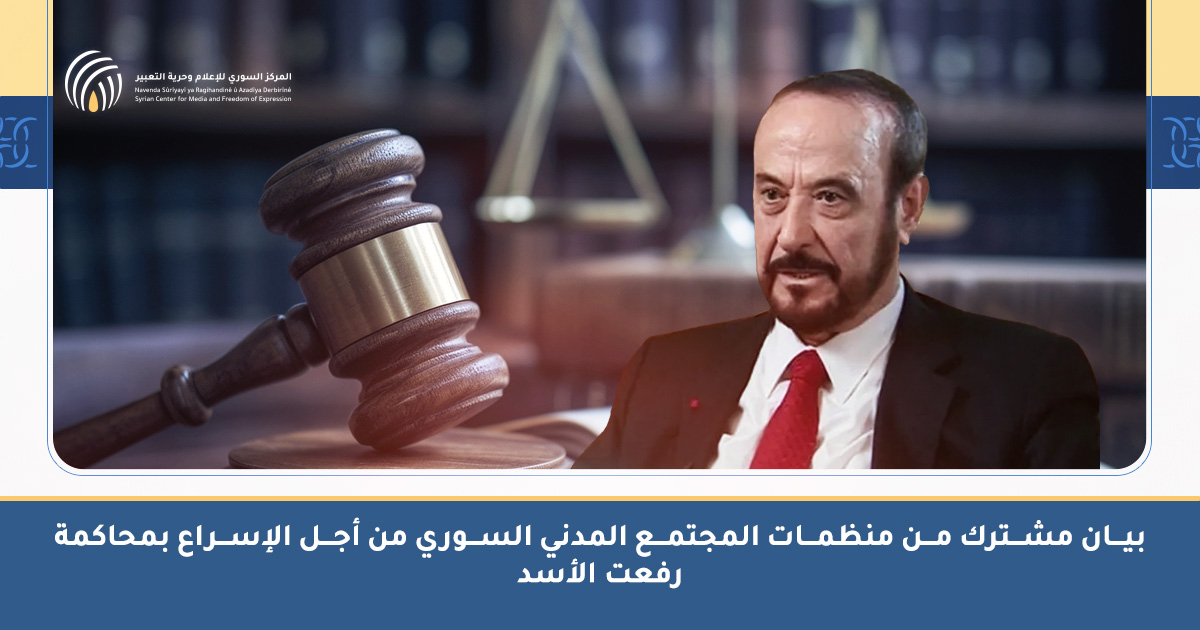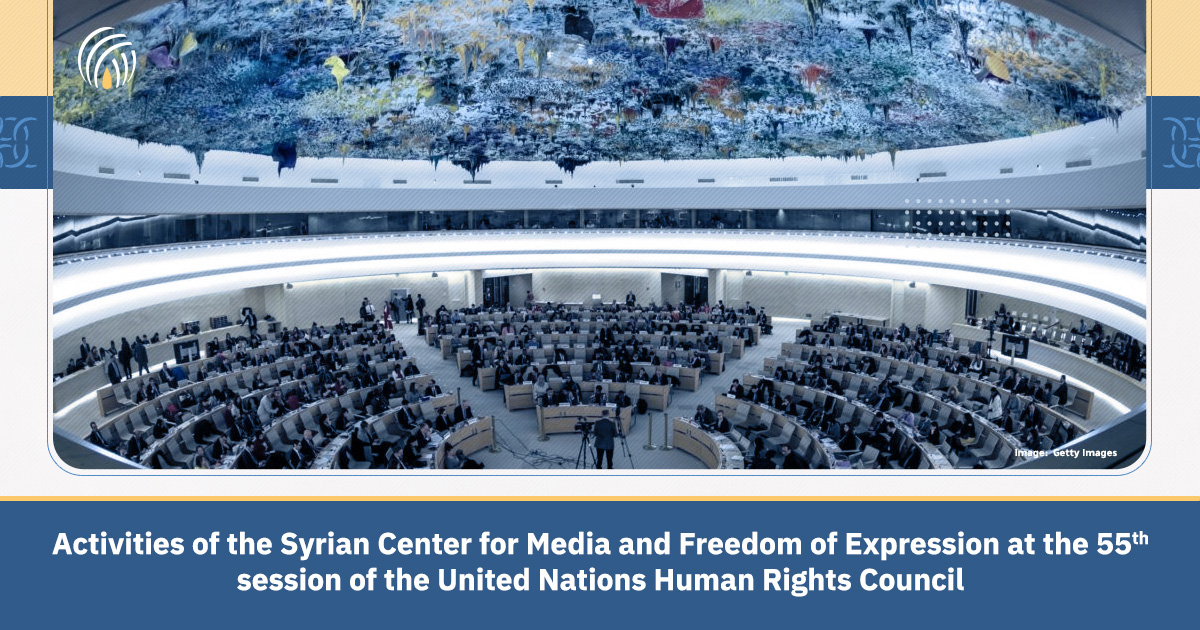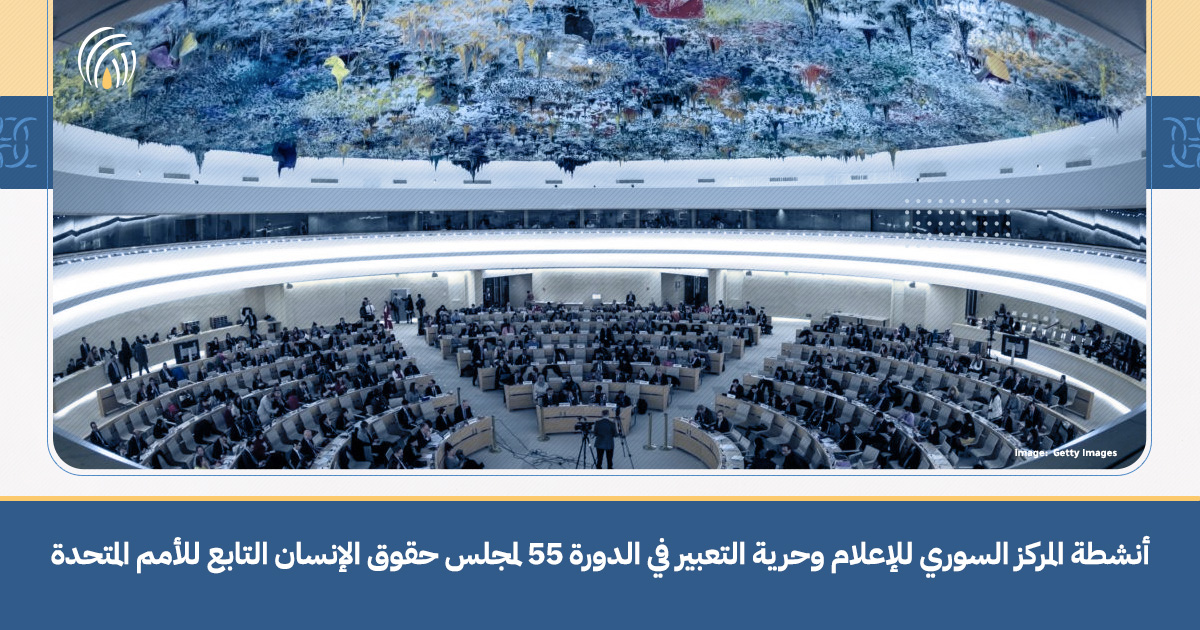The Syrian Center for Media and Freedom of Expression
Press Release
Paris September 16, 2020
Mazen DARWISH, lawyer and director general of the Syrian Center for Media and Freedom of Expression (SCM), testified for the lawsuit 1STE 9/19 over two consecutive days on 15 and 16 September 2020. This was based on the request of the regional court in Koblenz, Germany. The testimony highlighted political developments during three periods: the period between the unity time 1958 and 1970, the period 1970-2000, and the period 2000-2011. It also showcased the ways in which the authorities and their affiliated security services carry out certain practices and deal with opposition movements in Syria. This is possible through the efforts and experiences of the Syrian Center for Media and Freedom of Expression (SCM). The testimony involved information and copies of documents leaked from centers of the security services, as well as geographical coordinates of mass graves and reports documenting violations that occurred during the timeframe of the lawsuit.
Darwish also provided a set of new evidence that includes:
1- The structure of Branch 251/Al-Khatib within the period pertaining to the lawsuit, as well as chains of command and respective ranks and names of 93 persons, of which 29 are officers, 45 are non-commissioned officers, and 19 are civil employees. All of them worked in Branch 251 between March 2011 and November 2012.
2- Copies of documents leaked from the Harasta military hospital and the Red Crescent Hospital. These relate to cases of detainees who died either in the hospital as a result of the torture they received in the branch or before reaching the emergency room.
3- Leaked copies of internal telegram correspondence between one of the security branches and the administration that it belongs to, as well as the response of that administration. The latter includes conclusive evidence that proves the methodological and sequential practices used on the detainees from the moment they are arrested to the moment they die under torture and ending with the burial of their bodies by the Military Police. This is done with full knowledge of the National Security Office that reports to the President of the Republic.
4- A leaked copy of a ‘briefing note’ submitted to the head of Branch 251 regarding a dispute between the staff of the branch and the forensic officer at Harasta Military Hospital. It relates to the transfer and packaging of the bodies of detainees. The evidence also includes two pages of the register of the deceased at the branch.
5- Geographical coordinates of the locations of 4 mass graves in the vicinity of the capital, Damascus and its countryside, among which are graves for the torture victims of Branch 251 in the period between March 2011 and November 2012. In addition, evidence is provided regarding the location of one of the secret prisons which belongs to Branch 251 but is located on a military plot that belongs to the Fourth Division. Detainees are then transferred to that prison by the aforementioned branch.
Attorney Mazen DARWISH states: “In light of the new evidence presented, the list of suspects should be expanded to include the most high-ranking leaders within the Syrian authority, and an international criminal court should be established to note the involvement of the President of the Republic in committing war crimes and crimes against humanity.”
All the evidence presented by the Syrian Center for Media and Freedom of Expression (SCM), which was translated into German, includes the chain of possession for each of the pieces of evidence presented and a certificate of reliability. The center also provided a list of seven potential witnesses that we hope the court will invite to hear their testimonies.
Moreover, attorney Mazen DARWISH’s testimony included legal analysis showcasing the role and responsibility of Bashar al-Assad as head of the Syrian regime in granting immunity for the security services and extending their control over the rest of the state apparatus, especially the judiciary. This is highlighted through a set of decrees and decisions, the primary of which is Legislative Decree 55 of 2011, which gives the security services the role of the judicial police. This can be considered a circumvention of the lifting of the state of emergency and gives the security services legal permission to practice detention away from any judicial oversight. In addition, the National Security Office plays a central role, as it directly reports to the President of the Republic.
Furthermore, the testimony presented by Darwish focuses on the systematic practices of these security services during the period 2000-2010. This was possible because of the various reports issued by the Syrian Center for Media and Freedom of Expression (SCM) and many other human rights institutions which were also active in Syria during that time. This then completely negates any justifications given either by the defense in court, or, on a larger scale, by the Syrian government. The latter relates to its statement that these crimes are merely an expression of individual transgressions in response to an armed and ‘terrorist’ movement.
The court also received, through the Syrian Center for Media and Freedom of Expression (SCM), a recorded message from the brother of one of the victims who had been tortured in Branch 251. It calls on the court to question the accused on the whereabouts of his brother’s body.
The Syrian Center for Media and Freedom of Expression (SCM) affirms that survivors and families of the victims have every right to know the truth and follow the court’s developments in full transparency. Additionally, this court, despite trying only two suspects for committing violations among a much wider range of war crimes and crimes against humanity that have been systematically committed in Syria, remains a historical step. This means that the trial’s records must be fully accessible to all and especially Syrians.
Finally, the Syrian Center for Media and Freedom of Expression (SCM) emphasizes the fundamental roles played by Syrian human rights institutions in supporting the path towards justice, documenting violations, and gathering evidence in cooperation with victims’ and survivors’ associations themselves, whose courage and adherence to the values of justice and accountability have constituted an important turning point in the path towards preventing impunity in Syria. Therefore, rather than dealing with them as mere victims that need pity and sympathy, one must see them as survivors with an essential role in the process towards justice.
The Center also considers the trial in Koblenz as part of a much wider human rights movement that involves a large group of survivors, their associations, and Syrian and international human rights institutions from various parts of the world, especially Europe. These contribute to drawing the attention of the international community to the seriousness of the crimes committed in Syria. They also strive to keep the case for justice open, prevent the consolidation of the policy of impunity for everyone concerned, and ensure the rights of victims by benefitting from the universal jurisdiction of the courts and the dual nationality of the victims in order to establish a real and sustainable peace in Syria.
For inquiries please reach us on: [email protected]
